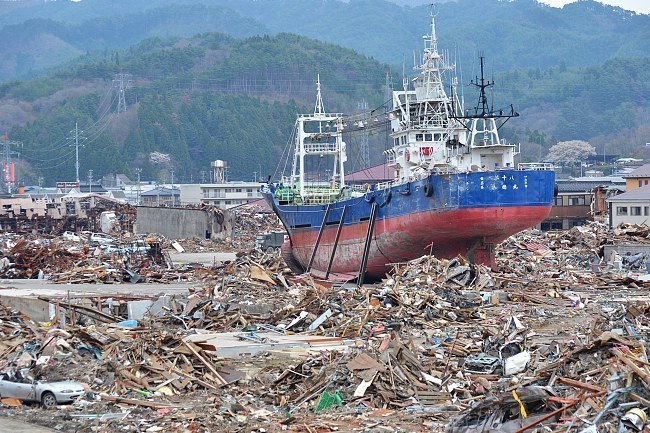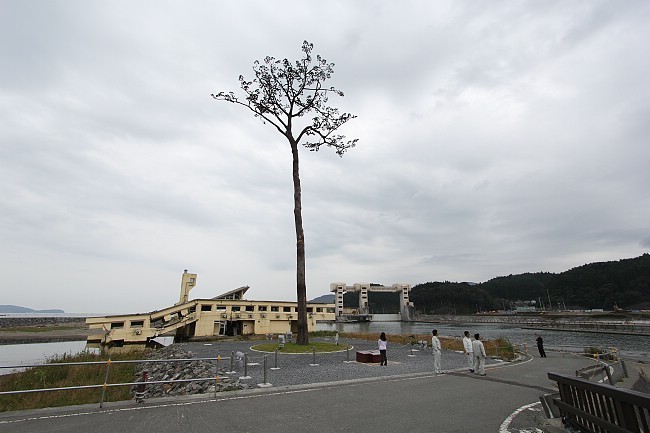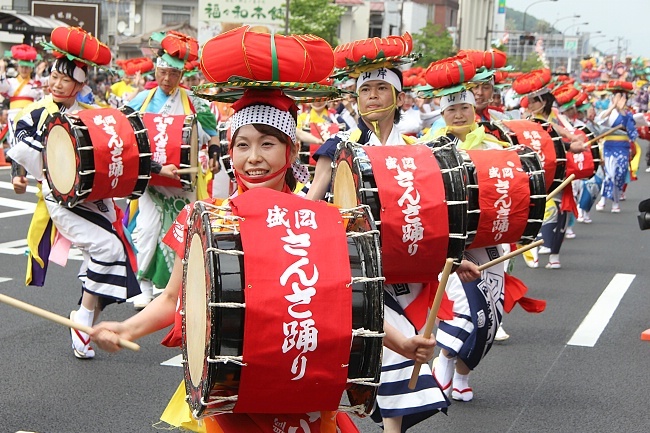Travel Highlights 2013
by Scott, staff writer of japan-guide.com
This journal is a log of my travels within Japan. Here you'll find my personal opinions on the places I've been and the things I've seen. Also expect to see the occasional review and editorial. Thanks for reading.
| previous post |
| next post |
2013/12/31 - Travel Highlights 2013
Well we've reached that time of the year again where we take a look back and remember some of the highlights of our travels over the past year. As always, 2013 was another busy year with plenty of material to choose from.
Number 10: Staying at a Capsule Hotel
Capsule hotels are one of those uniquely Japanese things that seem to bolster the image of weird Japan. To foreign travellers that is definitely part the draw, and I often hear people say that they want to try staying at one, but are either intimidated by the system or think that capsule hotels are too expensive for their budget. Well I totally understand where they are coming from and similar thinking kept me from trying a capsule hotel until just recently when I finally had the chance to stay in one in Shinjuku. I found the experience to be almost exactly like staying in the dorm style rooms at a youth hostel, except that the bunk beds are completely enclosed. And though it is not for everyone, it was quite enjoyable and more affordable than I thought it would be. Now I want to try some of the more unique and boutique capsule hotels elsewhere around the country.

Number 9: Ashikaga Flower Park
Wisteria flowers are big around where I live, and one of the more famous spots, the Ashikaga Flower Park, is not too far away. I finally made it out there this April for their wisteria festival, and even though I'm not much of a flower person, it's hard not to enjoy strolling around a park that is just completely filled with colorful blossoms. Check out the blog report here, and if you want to go, try to do it on a weekday when it isn't so crowded.

Number 8: Kitayamazaki Coast
Every six months we've been heading up to the Tohoku Region to check on the progress of the reconstruction efforts after the March 11, 2011 tsunami. On these trips we also try to check out some of the local sightseeing spots to see how they are doing and possibly introduce them into our sightseeing guide. One of the places that we visited this year was the absolutely beautiful Kitayamazaki Coast. Its majestic cliffs and stunning coastal vistas are exactly what I think about when I close my eyes and try to picture Japan. There's a coastal trail currently being repaired along the coast that I'm going to have to remember for future trips.

Number 7: Tsunami Memorials
During our Tohoku recovery trips we also pay regular visits to some of the makeshift memorials and monuments that remain after the tsunami, such as the ship that was washed far inland in Kesennuma and Rikuzentakata's Miracle Tree. These have become icons of the recovery and of the resilience of those affected by the disaster, but on the other hand, they are also poignant reminders of the people and the lives that were lost.
This year there were two big developments that show the conflicted nature that surround these monuments to the disaster. First, the owners of the Kesennuma ship decided to remove it in order to be sensitive to the concerns of the survivors. On the other hand, despite objections to the expense, the miracle tree is now permanently installed as a memorial and visitors can finally walk up and visit the site. It's too complicated for me to say if either of these decisions was the right one to make, but you can see how the sites currently look for yourself on our blog report from October.


Number 6: We Love Japan Tour
For the past few years we have been part of a group planning an interesting side project called the We Love Japan Tour, with the aim of sending two foreign reporters on a month long trek across the country to explore and share the hidden beauties of Japan. This year we had kicked it into overdrive to get everything done in time, but we did it and held the first ever tour this past October. While I only travelled along on a few of the stops along the way, being part of the planning and being able to introduce so much of Japan in one fell swoop was definitely a highlight for me this year. Check out the great blog posts that our reporters made of their journeys here and follow along with the next tour in 2015.




Number 5: Dining Under the Tracks in Yurakucho
I really like exploring the tiny little hole in the wall food districts like Omoide Yokocho, where the restaurants, sometimes no more than glorified food stands, are packed sardine-like into the crowded alleyways around the stations. Though they can appear claustrophobic, intimidating, and even dirty, I always feel like I'm exploring the real, authentic Japanese cuisine, kinda like a low budget Anthony Bourdain searching though the streets of Japan. This year we had the chance to check out the Yurakucho, which has another of these eating districts where you can find tons of those cramped little restaurants crammed into the spaces underneath the elevated train tracks. Although it feels that they are slowly being replaced by new, higher end restaurants (that are a little too bright and clean for my taste), there were still tons of authentic little izakaya for the adventurous to explore.

Number 4: Morning Kaisendon at the Fish Markets
There's nothing better than waking up early, heading to the fish market, and having a kaisendon for breakfast. This year I had the opportunity to do this at four of the best fish markets for raw fish in the morning: Tokyo's Tsukiji Market, Hakodate's Morning Market, the Shiogama Fish Market, and a sleeper entry, Aomori's Furukawa Fish Market. Of the four, the Hakodate kaisendon was the tastiest, but the most fun were the ones that we got to make ourselves at the Furukawa Fish Market.

Number 3: Teshima Art Museum and the Towada Art Center
Every year we check out a little bit of the modern art scene in Japan, paying visits to the various festivals and museums found throughout the country. This year I visited two of what were some of the most interesting yet: the Teshima Art Museum in the Seto Inland Sea, and the Towada Art Center near Lake Towada. The Teshima Art Museum was opened just after the 2010 Setouchi Triennale, and has but one incredibly beautiful exibit involving dancing water. It's intriguingly simple but difficult to describe, and I'd definitely recommend that you experience it for yourself. The Towada Art Center is a little bit more conventional of an art museum (especially compared to the Teshima Art Museum), and a fun stop over along the way to Lake Towada and the Oirase Stream.


Number 2: Attending a Morning Sumo Practice
Everyone in the Japan-guide offices enjoys watching sumo, so this year we finally got around to checking out a morning practice. One of the things that has been delaying this trip for so long is that it is a little bit difficult to arrange to go see one of these practices yourself. You basically need to go through an agency and even then there is no guarantee that you'll be able to watch, as the practices spaces are not really designed to accommodate spectators. But if you are willing to go through the effort (and don't mind quietly sitting on the floor for several hours as you shouldn't get up and move around while the wrestlers train), then heading to one of the practices is definitely something that sumo fans should try.

Number 1: Tohoku Rokkonsai Festival
I love the summer festivals, so for me the highlight of 2013 was the Tohoku Rokkonsai Festival, a kind of super festival that showcases the best summer matsuri from each of the six prefectures that make up the Tohoku Region. The festival was designed to join together the disaster hit region in support of one another and to remind the country of their resilience and of their recovery. In return, visitors get to see some of Japan's best festivals all in one place.
The festival's host city rotates each year, with this year's Rokkonsai held in Fukushima City. Though the image of Fukushima has suffered tremendously from its stricken nuclear power plant, nearly a quarter million people showed up to celebrate and enjoy he lively atmosphere of the festival. Of course, the highlight was the grand parade, which featured 1000 performers, dancers and musicians who put on performances of the Akita Kanto, Fukushima Waraji, Yamagata Hanagasa, Sendai Suzume Odori, Morioka Sansa Odori and Aomori Nebuta festivals. It seems that the 2014 Rokkonsai is tentatively scheduled to be held in Yamagata, although that could change and it's not going to be decided until the end of January. I've included some of the best pictures below, but also check out the full report for more info and a ton more photos.






| previous post |
| next post |


